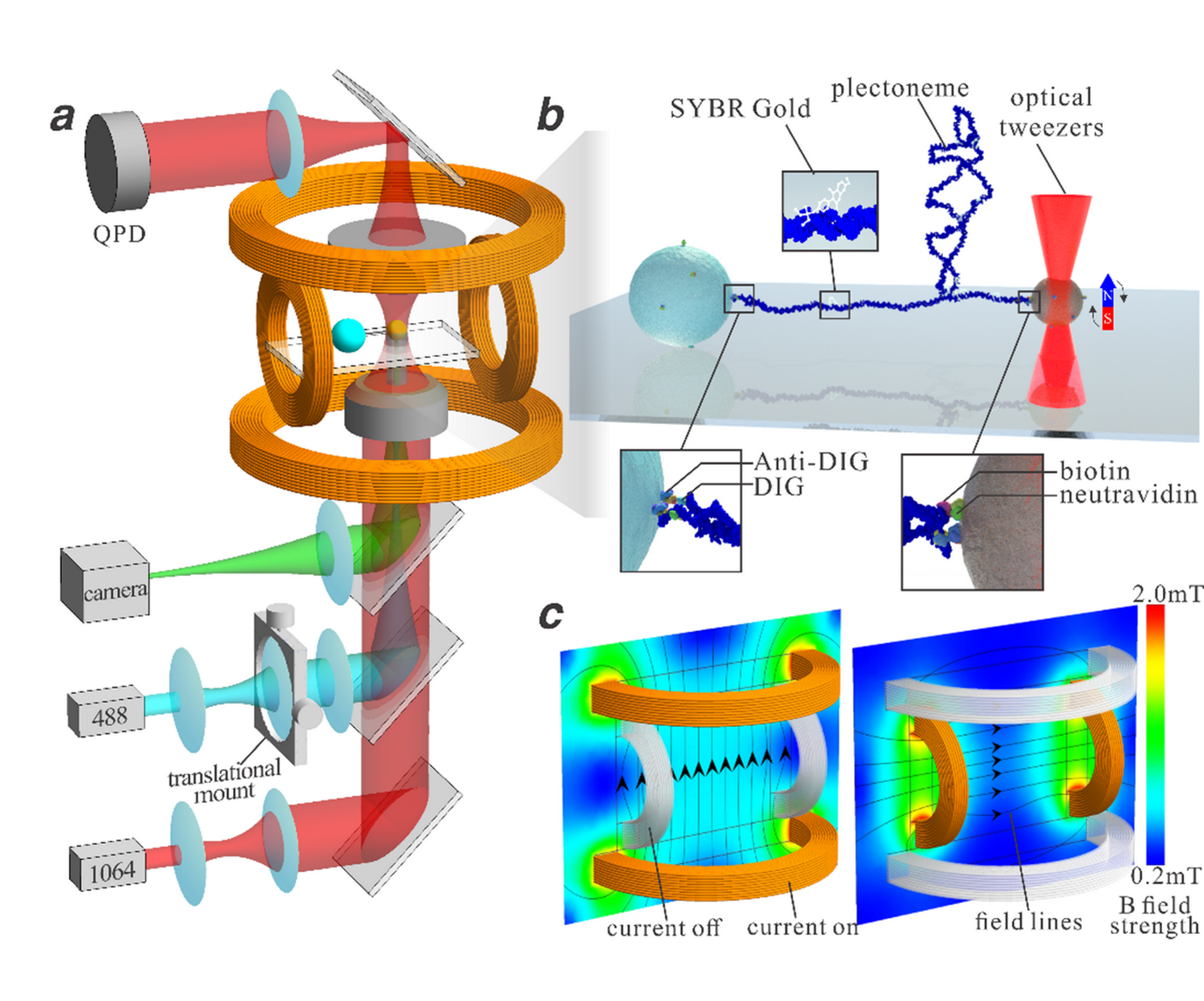COMBI-Tweez: a new nanotechnology to study the molecule of life
Researchers based at the Dept of Biology and School of Physics, Engineering and Technology have developed a remarkable new technology which is able to study single biological molecules using intrinsic twist properties to bring about essential functions in cells.

“Nano twists” that drive life
There are myriad so-called “chiral” molecules in biology, which have a fascinating property of not appearing to have the same structure were you to look at their image in a mirror - one of the best known examples being DNA, the “molecule of life”, whose chirality comes from its amazing double helix structure. This chirality, which looks in the case of extended DNA molecules like “nano twists”, results in a property which physicists describe as “symmetry breaking” which in turn can drive molecules into a range of different states. With input from sources of energy, these molecules can then jump between different states as part of their normal function, and it is this state jumping which essentially drives all processes in living cells - so chirality is an enormously fundamental feature which in effect effect steers key cellular processes.
Technology challenge
However, to study molecular chirality in DNA is really difficult since no technology exists which can twist single DNA molecules and be able to observe them directly at the same time. This motivated Prof Mark Leake from the Dept of Biology and the School of Physics, Engineering and Technology at the University of York to steer his research team to developing a completely new technology which could address this challenge.
“What can I say - it’s really difficult,” said Prof Leake. “You need, in effect, to combine three different nanoscale technologies all in a single device, and each of these in itself is really hard to develop.” The new optical microscope technology, known as COMBI-Tweez uses high-precision electromagnets to rotate a microscopic magnetised bead attached to one end of a single DNA molecule, which is also amazingly trapped by light by using a focused laser beam using a remarkable tool called optical tweezers which allows the molecule to be pulled out and extended so you can see it if you label it with special types of fluorescent dye molecules which bind to the DNA and using really a sensitive single-molecule bioimaging method and camera.
Visualising how DNA structures emerge
By rotating the magnetic “B field” you can then controllably twist the DNA and literally watch in real time how amazing structures called “plectonemes” form. These are essential supercoiled structures which all cells use to relieve torsion stress which would otherwise build up in the DNA during cellular processes like DNA replication and repair.
Prof Leake said: “By understanding how these plectonemes form in this way using COMBI-Tweez this may help us and others to develop new therapeutics which target these very basic, vital cellular processes in bacterial cells during life-threatening infections and in cancer cells - it really may help us to develop new drugs to help people to live longer, since many of the available cancer drugs and antibiotics currently available now no longer work due to resistance effects in this cells, for example resulting in bacteria known as “superbugs” – this is a genuinely terrifying prospect and one we scientists need to help solve. But a key message here is that this amazing new technology we have developed was done so primarily to address a basic biology question: it is what we call “blue skies” research but has resulted in an empowering new instrument that has the potential to help improve people’s lives. But I don’t think this would have worked if we had invest research into simply developing a technology in the absence of that curiosity-drive question and then in effect “gone fishing” for an application which could help society. The sensible strategy for anyone who really wants to develop innovative life-changing biotechnology, and the advice I would give anyone employed to make strategic decisions about where and when to invest finite research funds, is to resource “discovery” research first and foremost and then establish after that a pipeline to “translational” technology on the back of these curiosity-led research findings. To attempt to do this the other way round simply puts the cart before the horse”.
This research is published in the interdisciplinary science journal Nature Communications:
Notes to editors:
Shepherd, Guilbaud, Zhou & Howard et al. Correlating fluorescence microscopy, optical and magnetic tweezers to study single chiral biopolymers such as DNA. Nature Communications (2024)